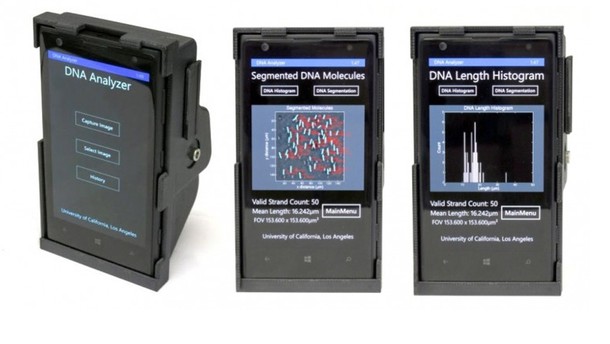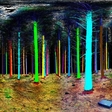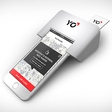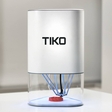
With this accessory, the phone will be able to detect individual DNA segments, analyse them and diagnose various genetic diseases, such as Alzheimer's disease and cancer. Since these types of diagnoses are currently only possible with the help of large and expensive machines, a quick and cheap diagnostics of this kind could mean the difference between life and death in the poorer or remote parts of the world. Since everything was created with the use of a 3D printer, the whole process is substantially cheaper than testing in big laboratories.
The attachment utilises the phone's camera and functions as a flourescence microscope, marking the patterns with flourescent molecules and illuminating them with a laser, so they can be observed. The latter is installed on a smartphone, which then scans the DNA segment with the use of special software and sends it to the team's laboratory. The servers in the laboratory proceed to measure the length of the DNA segment and return the results to the phone. The entire process takes less than ten seconds. The scanner is able to accurately measure DNA segments with 10,000 or more base pairs. At this range it is already possible to detect a lot of the important genes. The microscope is currently significantly less accurate with segments of less than 5,000 base pairs, but the team can address this in the future with different lenses.



